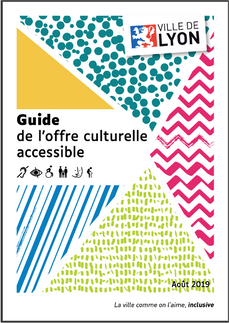Accessible City Concept and European Union Practices
- Sena Yılmaz
- May 6, 2021
- 2 min read
Updated: Aug 18, 2021

Our life standards, social activities, hobbies and quality of life depend largely on the conditions of the environment we live in and the opportunities we have. City plans and buildings are built in accordance with the possibilities of the human body. For many years, these cities were designed only for individuals who do not have physical disabilities and whose bodies functions fully. Individuals with disabilities were excluded from the design processes.
Developments in modern cities and architecture have been promoting more inclusive practices in the recent years, smart and accessible cities are being built so that people with any physical disability can participate in social life fully and independently. The rise of equality and inclusion concepts is reshaping our living spaces as well.
European Union organises "The Access City Awards" since 2011, they give awards every year to cities that develop applications in the field of accessibility and make arrangements with an inclusive perspective in urbanism. At the award ceremony, new urbanization practices are examined and different practices are discussed. The majority of developed cities make serious investments in this area and position themselves as accessible cities. Each year, cities are compared with architecture, digital infrastructure, transportation and traffic applications, and the most innovative and supportive municipalities are awarded in terms of accessibility. Open spaces, historical areas, museums and exhibitions are made to meet the needs of every citizen and the living standards of elderly and disabled citizens are being improved.
These practices have a great impact on tourism activities as well as on politics. 15% of the world's population has at least one disability and this is the largest "minority" group. Building cities suitable for people with disabilities promotes equality policies while promoting inclusion for other minorities.
Digital investments on making human life easier, accessibility and inclusiveness continue to shape our future. Current technologies facilitates the lives of disadvantaged groups and helps them become more social, self-confident individuals with a broad range of capabilities. In addition to physical accessibility applications such as braille signs, audio signs, yellow lines and elevators, digital applications such as audio navigation systems for the visually impaired, camera scanning applications, sign language translation for the hearing impaired are becoming widespread in city centers, municipal buildings, culture and art venues. While the digital experience offered in the physical world changes the habits of all individuals, it aims to socialize people with disabilities, include them in the active workforce and to improve their psychosocial status.
The cities of the future will meet all kinds of needs and ensure equal and full participation of minority groups in social life. In order to make accessible, fast and digital cities possible, we develop location-based applications and expand the usage areas of our products day by day. In the age of digitalization, We make more venues accessible day by day with our socially responsible partners and become stronger with the social benefit we are creating.

Resources:







Comments